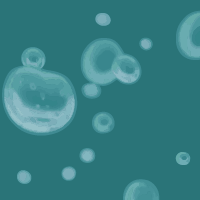Advanced Technology for Oil and Nature Gas Exploration
Topic Information
Dear Colleagues,
The unprecedented level of rapid globalization has accelerated the need for petroleum and gas. Without advanced petroleum and gas exploration technology, it becomes more difficult to recover sufficient amounts of oil and gas. Low-to-medium maturity shale oil is a promising alternative energy, and the in-situ conversion method, via a catalyst or high-temperature fluid, has been proven to be one of the most promising measures. Novel nanomaterials are also urgently needed. In addition, drilling causes serious formation damage without suitable pretreatment. To maintain stable oil and gas production, efficient formation protection measures must be taken; in this area, novel technology and agents are important safeguards.
Dr. Jiafeng Jin
Dr. Lipei Fu
Topic Editors
Keywords
- synthesis and application of nanomaterials for the petroleum industry
- drilling and completion fluid
- novel technology for deep-coalbed methane
- intelligent system and materials for the petroleum industry
Participating Journals
| Journal Name | Impact Factor | CiteScore | Launched Year | First Decision (median) | APC | |
|---|---|---|---|---|---|---|

Energies
|
3.2 | 7.3 | 2008 | 16.2 Days | CHF 2600 | Submit |

Processes
|
2.8 | 5.5 | 2013 | 16 Days | CHF 2400 | Submit |

Resources
|
3.2 | 7.2 | 2012 | 24.6 Days | CHF 1600 | Submit |

Gels
|
5.3 | 7.6 | 2015 | 12.5 Days | CHF 2100 | Submit |

Applied Sciences
|
2.5 | 5.5 | 2011 | 19.8 Days | CHF 2400 | Submit |

Journal of Marine Science and Engineering
|
2.8 | 5.0 | 2013 | 15.6 Days | CHF 2600 | Submit |

Preprints.org is a multidisciplinary platform offering a preprint service designed to facilitate the early sharing of your research. It supports and empowers your research journey from the very beginning.
MDPI Topics is collaborating with Preprints.org and has established a direct connection between MDPI journals and the platform. Authors are encouraged to take advantage of this opportunity by posting their preprints at Preprints.org prior to publication:
- Share your research immediately: disseminate your ideas prior to publication and establish priority for your work.
- Safeguard your intellectual contribution: Protect your ideas with a time-stamped preprint that serves as proof of your research timeline.
- Boost visibility and impact: Increase the reach and influence of your research by making it accessible to a global audience.
- Gain early feedback: Receive valuable input and insights from peers before submitting to a journal.
- Ensure broad indexing: Web of Science (Preprint Citation Index), Google Scholar, Crossref, SHARE, PrePubMed, Scilit and Europe PMC.


